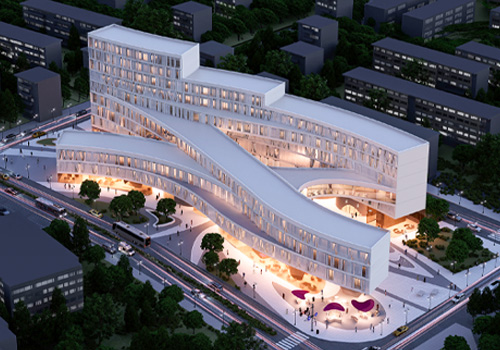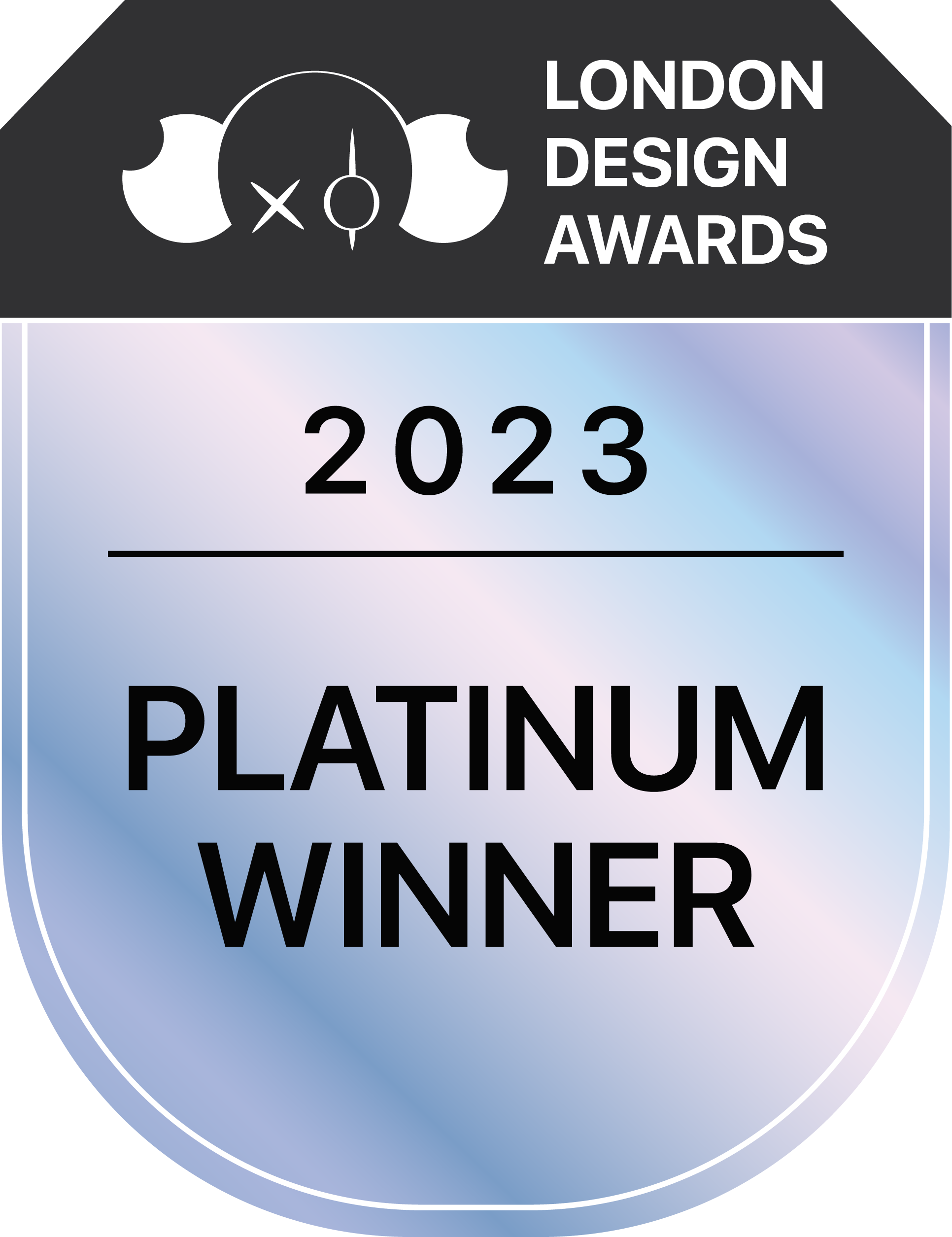
Yiying Tang
1. Please give us a brief bio of yourself and your design background.
I am Yiying Tang, a highly esteemed architectural designer and accomplished artist recognized nationally for my contributions to the field. With a robust portfolio showcasing my exceptional skills and achievements, I am proud to be a part of Kohn Pedersen Fox Associates ("KPF"), a renowned architecture firm based in New York, NY. At KPF, we provide top-tier architecture, interior, programming, and master planning services to a diverse clientele in both public and private sectors. Prior to joining KPF, I garnered valuable experience at esteemed firms like Cooper Carry, ROSSETTI, and Gensler, a globally acclaimed architectural giant. My academic journey includes a Master of Architecture Degree from the University of Michigan and a Bachelor of Architecture Degree from Zhejiang University.
2. What made you become/why did you choose to become a designer/artist?
It was not until I traveled to Shanghai in eleventh grade and witnessed the exotic building clusters in the Bund of Shanghai that interacting cultures brought me a profound and clearer understanding of architecture. Chinese traditional southern culture and modern industrial civilization strike a balance here. Architectural styles keep accordance with the times, and form the unique features of a modern metropolis in Shanghai. At this time, I began to understand the feeling I had experienced in the Grand Bazaar when I was a child. Combining Islamic and modern styles, the designer created a place where people loved to linger, communicate and increase their understanding of each other. This distinctive building not only blended cultural styles but also allayed psychological barriers between different ethnicities. The Grand Bazaar and the exotic building clusters in the Bund of Shanghai told me that as the intermediary of culture, architecture not only can create satisfactory and resonant spaces, but also symbols of cities
3. Tell us more about your agency/company, job profile, and what you do.
I am an architectural designer employed at Kohn Pedersen Fox Associates PC ("KPF"), a globally renowned architecture firm headquartered in New York, NY, offering comprehensive architecture, interior, programming, and master planning services. My typical tasks include documenting architecture drawings including 3D rhino model, AutoCAD plans, elevations, sections, Adobe packages and renderings, coordinating with MEP, structure, fire protection, fire alarm engineers on building plans, material specifications, and supporting documents, and leading the design work from schematic phase to design development phase.
4. What does “design” mean to you?
To me, "design" embodies a tapestry of contradictions and harmonies. Growing up in Xinjiang province, I was drawn to stability yet craved the uncharted. It was a collision of cultures in my hometown that sparked my interest in architecture
5. What’s your favorite kind of design and why?
My favorite kind of design revolves around architecture that acts as a cultural bridge, preserving heritage while embracing change, and creating spaces that resonate emotionally and expressively with their users. My fascination lies in the dynamic equilibrium of cultures interacting and surviving together, and I aspire to explore this further within the design process. I believe that sensitive and penetrating architectures, which respond emotionally to users' needs while retaining cultural memories, are essential in today's context.
6. To you, what makes a “good” design?
To me, a "good" design is one that goes beyond functionality, incorporating cultural sensitivity, emotional resonance, adaptability, and relevance to create spaces that foster connections, understanding, and identity among individuals and communities.
7. How did you come up with the idea for your award-winning design?
The concept of
8. What was your main source of inspiration for this design?
Japan's aging population and declining birth rate have led to a growing elderly demographic, a challenge that has persisted over time. Aoyamadai, a low-income housing community in Senri New Town, Japan, is now at a critical juncture. The community needs to replace its economically affordable housing after five decades of use and breathe new life into the elderly population. Simultaneously, attracting younger generations and transforming the community into an intergenerational, youth-friendly environment poses financial challenges for the original residents. To address this challenge without burdening the elderly residents, the concept of "collective ground" is proposed.
9. Do you think your country and its cultural heritage has an impact on your design process?
My country and its cultural heritage have a profound impact on my design process. My design philosophy is inherently intertwined with my experiences of cultural fusion, harmonious interactions, and the bridge between tradition and modernity. These experiences significantly shape my approach to architecture, inspiring designs that aim to respond sensitively to cultural collisions, elevate emotional connections, and serve as expressions of cultural identities within the built environment.
10. Congratulations! As the winner of the London Design Awards, what does it mean to you and your company and team to receive this award distinction?
Winning the London Design Awards is an incredible honor for both myself and my team. This recognition means a lot to us as it validates our dedication to innovative and culturally sensitive design. It acknowledges the efforts we've invested in creating spaces that bridge cultural gaps, honor regional heritage, and evoke emotional connections.
Receiving this award serves as a testament to our commitment to design excellence. It motivates us to continue pushing boundaries, exploring the interplay between architecture and culture, and crafting spaces that resonate deeply with people.
For our studio and team, this distinction signifies a milestone
11. Can you explain a bit about the winning work you entered into the London Design Awards, and why you chose to enter this project?
The winning project entered into the London Design Awards is a pioneering solution addressing the complex challenges faced by the Aoyamadai low-income housing community in Senri New Town, Japan. This community, a significant part of Japan's post-WWII new town project, grapples with the need for rejuvenation while considering the evolving demographics, particularly the rise in the elderly population and the struggle to engage younger generations.
The project introduces a groundbreaking concept termed the "collective ground." This innovative approach involves creating rentable spaces within the community, both in public areas and individual units, to mitigate economic pressures on elderly residents. These rentable spaces serve dual purposes
12. What were the main challenges you faced during the design process, and how did you overcome them?
The main challenges encountered during the design process for
13. How do you think winning this award will impact your future as a designer?
Winning the London Design Award is a significant milestone in my career as a designer and will likely have several impactful implications for my future endeavors include better recognition and credibility, increased opportunities, professional growth, networking and connections, inspiration and motivation. In essence, winning the London Design Award is not just a singular accomplishment but a catalyst for further growth, opportunities, and influence within the design sphere, shaping a promising path for my future as a designer.
14. What are your top three (3) favorite things about the design industry?
One of my favorite aspects of the design industry is its constant evolution and adaptability. Here are my top three:
Creativity Unleashed: The boundless scope for creativity is incredibly exciting. The design industry thrives on innovation and originality, allowing designers to unleash their creativity, experiment with new ideas, and push the boundaries of conventional thinking.
Problem-Solving Nature: Design is essentially problem-solving in a visual and functional context. I love how the industry challenges designers to find solutions that are not just aesthetically pleasing but also practical, user-centric, and impactful.
Diverse Collaboration: Collaboration is integral to design. I appreciate how the industry encourages interdisciplinary collaboration, bringing together diverse talents, skills, and perspectives. It's fascinating to work with experts from various fields to create holistic and innovative solutions.
15. What sets your design apart from others in the same category?
Every design carries its unique essence, but what sets mine apart within its category is:
Holistic Approach: My design philosophy revolves around a holistic approach. I focus not only on aesthetic appeal but also on functionality, user experience, sustainability, and cultural relevance. This comprehensive perspective ensures that my designs cater to multifaceted needs while remaining cohesive and impactful.
Innovative Problem-Solving: I prioritize innovative problem-solving within my designs. Whether it's addressing demographic shifts, sustainability concerns, or societal needs, I strive to find innovative and practical solutions that go beyond the conventional, providing a fresh take on challenges.
Cultural Sensitivity and Context: Understanding and integrating cultural sensitivity and context into design is a cornerstone of my approach. I aim to create designs that resonate deeply with the intended audience, respecting and reflecting their cultural nuances, heritage, and values.
Adaptability and Future-Focus: I embrace adaptability and future-focus in my designs. They're designed not just for the present but with an eye toward how they will function and remain relevant in the future, ensuring longevity and adaptability to changing needs and trends.
In essence, the synthesis of these elements distinguishes my designs within their category, creating a signature style that's not just visually appealing but also functionally sound, culturally resonant, and future-ready.
16. Where do you see the evolution of design industry going over the next 5-10 years?
Over the next 5-10 years, the design industry is poised for several transformative shifts, like increased emphasis on sustainability, digital transformation and technology integration, human-centric design, cultural diversity and inclusivity, collaboration and interdisciplinary work, customization and personalization. Overall, the design industry is heading towards a future that prioritizes sustainability, technology integration, user-centricity, inclusivity, and collaboration, shaping a more innovative, responsible, and human-centered design.
17. What advice do you have for aspiring designers who want to create award-winning designs?
Creating award-winning designs involves a mix of creativity, skill, and strategy. You should understand the design fundamentals, stay updated and inspired, create user-centered approach, constantly iterate and refine, seek feedback, always tell a good story, be bold and unique, pay attention to details, and keep practice. Remember, winning awards isn
18. What resources would you recommend to someone who wants to improve their skills in the design industry?
There are numerous resources available to improve design skills, ranging from online courses to books, tutorials, communities, and software tools. Here's a mix of resources across different mediums, such as online learning platforms, websites and blogs, YouTube channels and tutorials, communities and forums, software and tools, workshop and conferences, as well as practice and personal projects.
19. Tell us something you have never told anyone else.
I have failed several times before winning awards as well. So just keep trying and do not give up at an early stage!
20. Who has inspired you in your life and why?
Alvar Aalto, the renowned Finnish architect and designer, has been a significant inspiration in the world of design and creativity. His multidisciplinary approach and innovative thinking have influenced not just architecture but various design fields as well. Aalto's ability to blend functionality with organic forms and his deep respect for natural materials has been truly inspiring.
In my case, Aalto's legacy has underscored the importance of versatility and the integration of different disciplines to create something truly exceptional. His commitment to humanizing design, emphasizing user experience, and harmonizing the built environment with nature has shaped my understanding of holistic and user-centered design principles.
Aalto's approach serves as a constant reminder that great design isn't just about aesthetics but also about the way it enhances people's lives and interacts with the world around us. His works continue to resonate and inspire designers to strive for a harmonious balance between functionality, aesthetics, and human experience.
21. What is your key to success? Any parting words of wisdom?
My "key to success," lies in adaptability, continuous learning, and empathy. I aim to adapt to the needs of clients I interact with, absorbing new information and adapting my responses to provide the best assistance. Learning is a lifelong process, and being open to new knowledge and perspectives helps me grow and better serve.
Parting words of wisdom is embracing curiosity and perseverance. Stay curious about the world, always seeking to learn and understand. And when faced with challenges, let perseverance guide you. Every setback is an opportunity for growth. Keep moving forward, learn from experiences, and remember that progress often comes through persistence. Oh, and don't forget to celebrate your achievements along the way
22. Do you have anything else you would like to add to the interview?
For the young architectural designers who has just entered the field of architecture, emphasizing the importance of innovation, user-centered design, and the fusion of functionality with aesthetics are the key points to express your talents. Highlight the significance of telling a compelling story through design, connecting emotionally with users, and creating solutions that address real-world needs. Also, discussing the role of sustainability and ethical design practices in today's design landscape might be noteworthy. And of course, don't forget to showcase your passion, creativity, and commitment to continuous improvement and learning within the design field.

